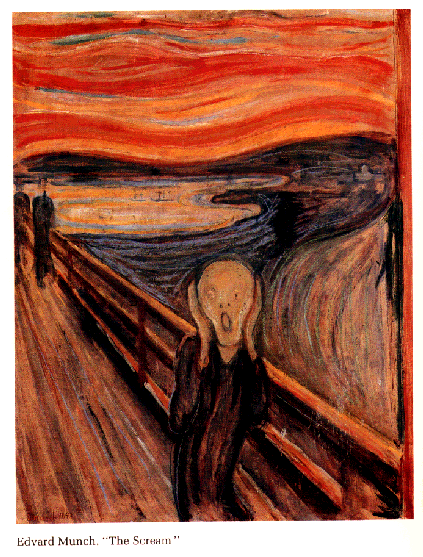
a canonical expression of the great modernist thematics of
alienation, anomie, solitude, social fragmentation, and isolation,
a virtually programmatic emblem of what used to be called
the age of anxiety. It will here be read as an embodiment not merely
of the expression of that kind of affect but, even
more, as a virtual deconstruction of the very aesthetic of expression
itself, which seems to have dominated much of what
we call high modernism but to have vanished away--for both practical
and theoretical reasons--in the world of the
postmodern. The very concept of expression presupposes indeed
some separation within the subject, and along with that
a whole metaphysics of the inside and outside, of the wordless pain
within the monad and the moment in which, often
cathartically, that "emotion" is then projected out and externalized,
as gesture or cry, as desperate communication and the
outward dramatization of inward feeling. (69-70)
. . . it shows us that expression requires the category of the
individual monad, but it also shows us the heavy price to be paid for
that precondition, dramatizing the unhappy paradox that when you constitute
your individual subjectivity as a self-sufficient field and a closed realm,
you thereby shut yourself off from everything else and condemn yourself
to the mindless solitude of the monad, buried alive and condemned to a
prison cell without egress. (72)
